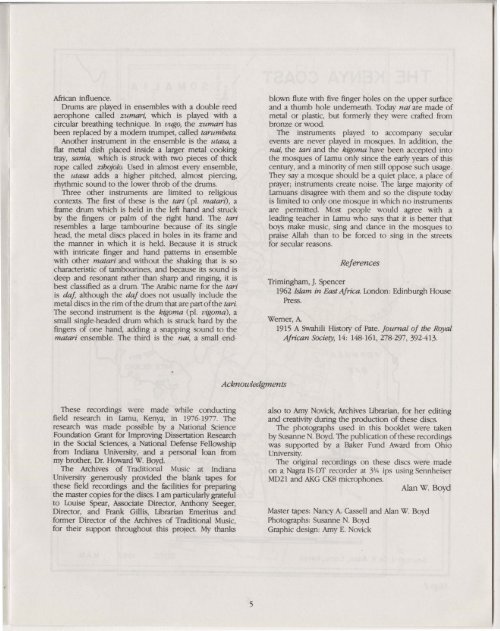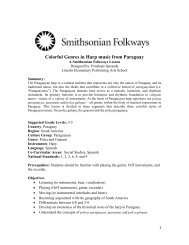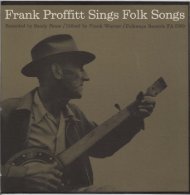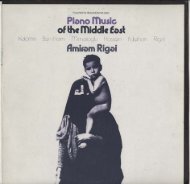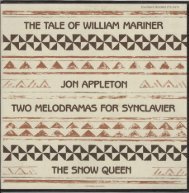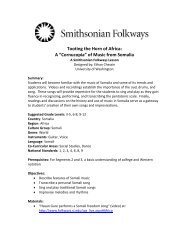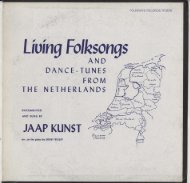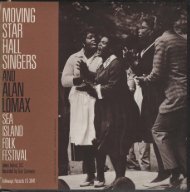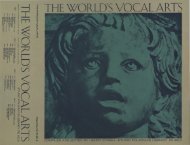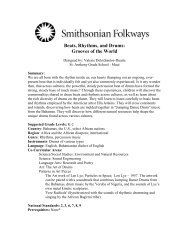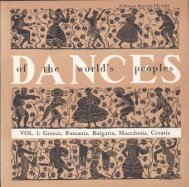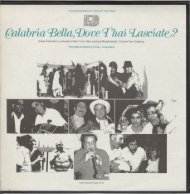Create successful ePaper yourself
Turn your PDF publications into a flip-book with our unique Google optimized e-Paper software.
African influence.Drums are played in ensembles with a double reedaerophone called zumari, which is played with acircular breathing technique. In vugo, <strong>the</strong> zumari hasbeen replaced by a modem trumpet, called tarumbeta.Ano<strong>the</strong>r instrument in <strong>the</strong> ensemble is <strong>the</strong> utasa, aflat metal dish placed inside a larger metal cookingtray, sania, which is struck with two pieces <strong>of</strong> thickrope called zibojolo. Used in almost every ensemble,<strong>the</strong> utasa adds a higher pitched, almost piercing,rhythmic sound to <strong>the</strong> lower throb <strong>of</strong> <strong>the</strong> drums.Three o<strong>the</strong>r instruments are limited to religiouscontexts. The first <strong>of</strong> <strong>the</strong>se is <strong>the</strong> tari (pI. matari), aframe drum which is held in <strong>the</strong> left hand and struckby <strong>the</strong> fingers or palm <strong>of</strong> <strong>the</strong> right hand. The tariresembles a large tambourine because <strong>of</strong> its Singlehead, <strong>the</strong> metal discs placed in holes in its frame and<strong>the</strong> manner in which it is held. Because it is struckwith intricate finger and hand patterns in ensemblewith o<strong>the</strong>r matari and without <strong>the</strong> shaking that is socharacteristic <strong>of</strong> tambourines, and because its sound isdeep and resonant ra<strong>the</strong>r than sharp and ringing, it isbest classified as a drum. The Arabic name for <strong>the</strong> tariis daf, although <strong>the</strong> daf does not usually include <strong>the</strong>metal discs in <strong>the</strong> rim <strong>of</strong> <strong>the</strong> drum that are part <strong>of</strong> <strong>the</strong> tari.The second instrument is <strong>the</strong> kigoma (pI. vigoma), asmall Single-headed drum which is struck hard by <strong>the</strong>fingers <strong>of</strong> one hand, adding a snapping sound to <strong>the</strong>matari ensemble. The third is <strong>the</strong> nai, a small endblownflute with five finger holes on <strong>the</strong> upper surfaceand a thumb hole underneath. Today nai are made <strong>of</strong>metal or plastiC, but formerly <strong>the</strong>y were crafted frombronze or wood.The instruments played to accompany secularevents are never played in mosques. In addition, <strong>the</strong>nai, <strong>the</strong> tari and <strong>the</strong> kigoma have been accepted into<strong>the</strong> mosques <strong>of</strong> lamu only since <strong>the</strong> early years <strong>of</strong> thiscentury, and a minority <strong>of</strong> men still oppose such usage.They say a mosque should be a quiet place, a place <strong>of</strong>prayer; instruments create noise. The large majority <strong>of</strong>lamuans disagree with <strong>the</strong>m and so <strong>the</strong> dispute todayis limited to only one mosque in which no instrumentsare permitted. Most people would agree with aleading teacher in lamu who says that it is better thatboys make mUSic, sing and dance in <strong>the</strong> mosques topraise Allah than to be forced to sing in <strong>the</strong> streetsfor secular reasons.ReferencesTrimingham, J. Spencer1%2 Islam in East Africa. London: Edinburgh HousePress.Werner,A1915 A Swahili History <strong>of</strong> Pate. Journal <strong>of</strong> <strong>the</strong> RoyalAfrican Society, 14: 148-161,278-297, 392-413.AcknowledgmentsThese recordings were made while conductingfield research in lamu, <strong>Kenya</strong>, in 1976-1977. Theresearch was made possible by a National ScienceFoundation Grant for Improving Dissertation Researchin <strong>the</strong> Social Sciences, a National Defense Fellowshipfrom Indiana University, and a personal loan frommy bro<strong>the</strong>r, Dr. Howard W. Boyd.The Archives <strong>of</strong> Traditional <strong>Music</strong> at IndianaUniversity generously provided <strong>the</strong> blank tapes for<strong>the</strong>se field recordings and <strong>the</strong> facilities for preparing<strong>the</strong> master copies for <strong>the</strong> discs. I am particularly gratefulto Louise Spear, Associate Director, Anthony Seeger,Director, and Frank Gillis, Librarian Emeritus andformer Director <strong>of</strong> <strong>the</strong> Archives <strong>of</strong> Traditional <strong>Music</strong>,for <strong>the</strong>ir support throughout this project. My thanksalso to Amy NOvick, Archives librarian, for her editingand creativity during <strong>the</strong> production <strong>of</strong> <strong>the</strong>se discs.The photographs used in this booklet were takenby Susanne N. Boyd. The publication <strong>of</strong><strong>the</strong>se recordingswas supported by a Baker Fund Award from OhioUniversity.The original recordings on <strong>the</strong>se discs were madeon a, Nagra IS-DT recorder at 3314 ips using SennheiserMD21 and AKG CK8 microphones.Alan W. BoydMaster tapes: Nancy A Cassell and Alan W. BoydPhotographs: Susanne N. BoydGraphic design: Amy E. Novick5


